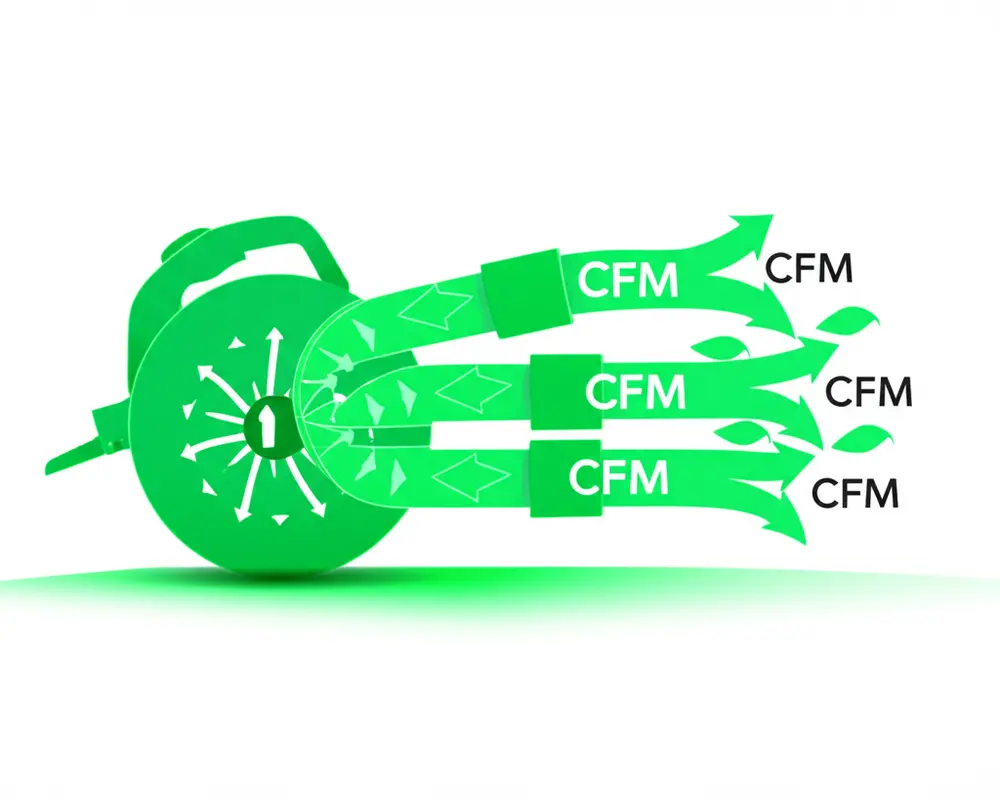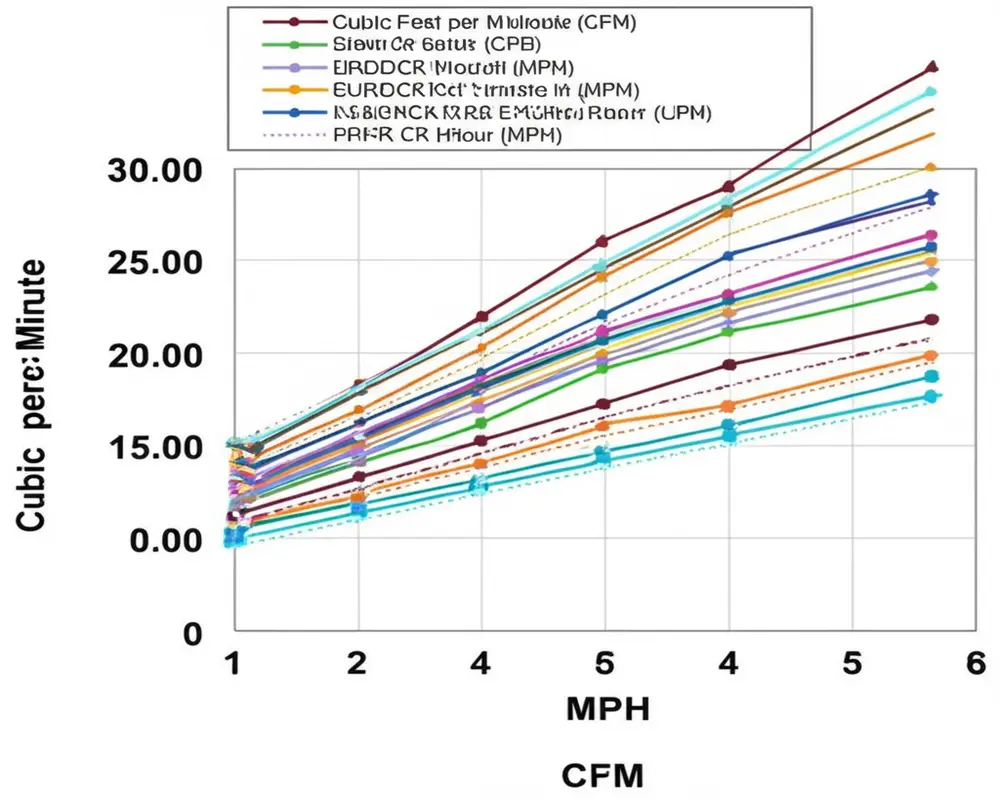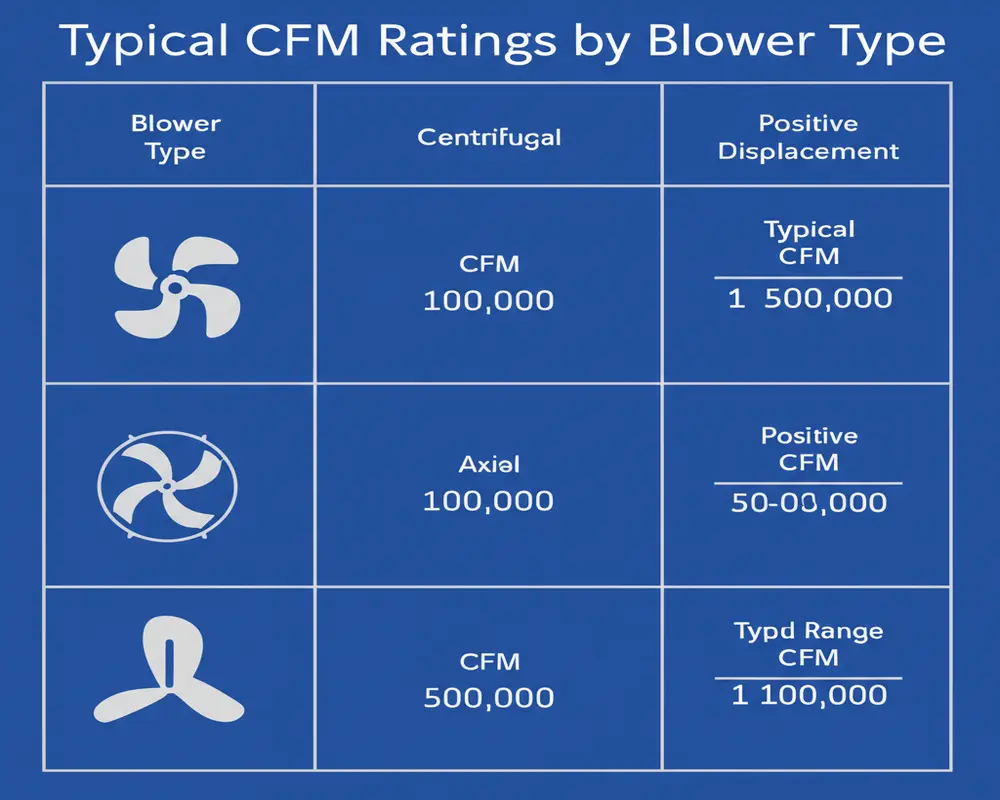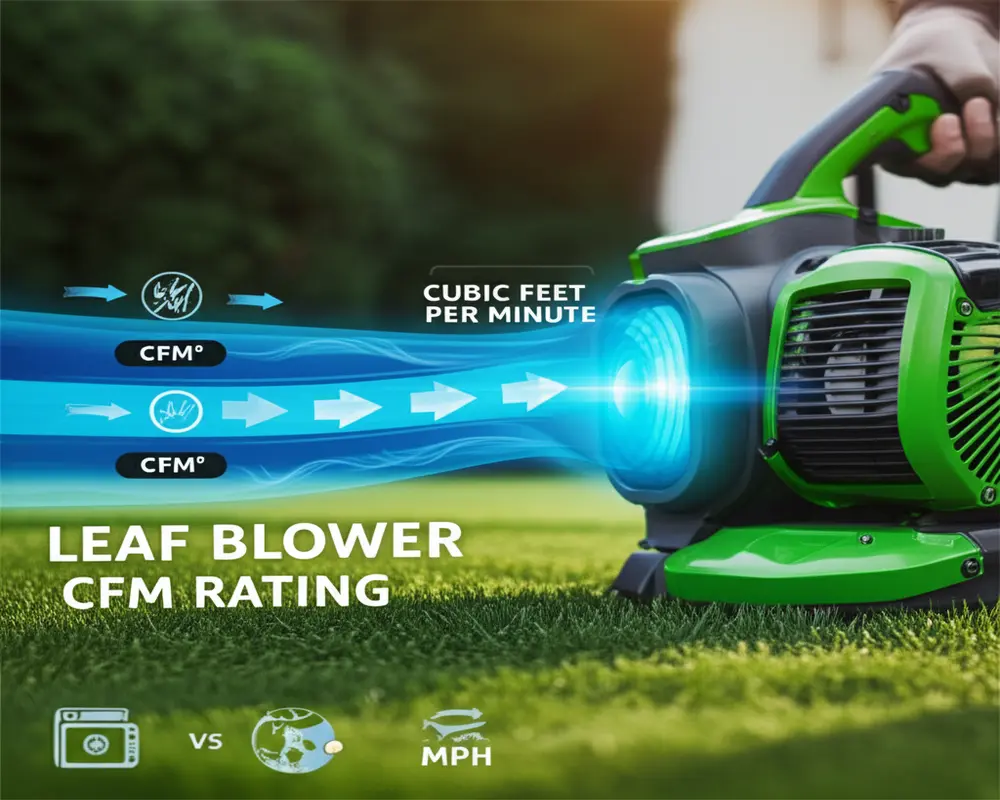Leaf Blower CFM Rating: The Ultimate Guide to Power & Selection
When it comes to maintaining a pristine yard, understanding the performance of your leaf blower is essential. Among the myriad specifications manufacturers tout, the leaf blower CFM rating stands as a critical measure of power and efficiency. But what exactly does CFM signify, and how does it influence your choice of equipment? This comprehensive guide will unravel the mysteries behind CFM, compare it with MPH, and provide expert advice on selecting the ideal leaf blower tailored to your yard’s unique needs.
I. Introduction: Unlocking the Power of Your Leaf Blower
Why is understanding CFM key to a clean yard and a smart purchase? The answer lies in how effectively your leaf blower moves debris. CFM, or Cubic Feet per Minute, quantifies the volume of air your blower pushes out, directly affecting its ability to clear leaves, grass clippings, and other yard waste. A blower with the right CFM rating ensures efficient clean-up, minimizing effort and time.
This guide dives deep—from defining CFM and its role in performance, to practical tips for choosing a blower that fits your yard and workload. Whether you’re a homeowner with a modest yard or a landscaping professional tackling vast properties, mastering CFM knowledge will empower your purchase decisions.
II. What Exactly is CFM in a Leaf Blower? (Cubic Feet Per Minute Explained)
At its core, CFM (Cubic Feet per Minute) measures the volume of air a leaf blower moves per minute. Think of it as the width and depth of a wave of air sweeping through your yard. The higher the CFM, the greater the volume of air pushed, enabling you to cover larger areas or move lighter debris with ease.
Imagine the difference between a wide ocean wave and a narrow jet of water. The wave represents high CFM—broad and powerful, capable of sweeping a large area. The narrow jet, by contrast, is analogous to high MPH (miles per hour), delivering a concentrated, fast stream of air. Both qualities are valuable, but they serve different purposes in leaf blowing.

III. CFM vs. MPH: The Dynamic Duo of Leaf Blower Performance
Alongside CFM, another crucial metric is MPH (Miles Per Hour), which measures the speed at which air exits the blower nozzle. Together, these two figures shape your blower’s overall performance.
While CFM indicates the volume of air, MPH reflects the velocity. A combination of both yields the force necessary to move debris effectively. High CFM alone might push lightweight leaves over a wide area, but without adequate MPH, it may lack the punch to dislodge wet, stubborn debris.
Situations demanding more CFM include clearing broad patios or lawns scattered with dry leaves. Conversely, high MPH becomes vital when dealing with compacted, damp leaves, or when needing precision—for example, blowing debris out of tight corners.
Striking the right balance between CFM and MPH enhances efficiency. Many professionals rely on equipment boasting both high volume and velocity, especially for commercial or large-scale landscaping tasks.

IV. Why CFM Rating is Crucial for Your Leaf Blower’s Effectiveness
The CFM rating directly influences how fast and efficiently your leaf blower operates. A higher CFM rating means you can cover more ground with fewer passes, reducing the time spent outdoors. It also means handling various debris types becomes less taxing—dry leaves, damp leaves, grass clippings, and even light twigs respond differently to airflow volume.
Moreover, a blower with an appropriate CFM rating reduces physical strain. By clearing your yard quicker, you minimize fatigue and improve ergonomics, especially when using powerful backpack or walk-behind models designed for extended use.
V. Typical CFM Ratings by Leaf Blower Type and Their Ideal Uses
Leaf blowers come in various forms, each tailored for specific yard sizes and tasks. Understanding typical CFM ratings by leaf blower type helps match your needs with the right tool.
| Leaf Blower Type | Typical CFM Range | Ideal Uses |
|---|---|---|
| Handheld Electric/Corded | 100 – 350 CFM | Small patios, light debris |
| Handheld Battery-Powered | 200 – 600 CFM | Small to medium yards |
| Handheld Gas-Powered | 300 – 700 CFM | Medium to large yards |
| Backpack Leaf Blowers | 400 – 900+ CFM | Large properties, professional use |
| Walk-Behind/Wheeled | 1000+ CFM | Commercial, large scale tasks |

VI. Matching CFM to Your Specific Needs: Practical Guide
Choosing the right CFM rating requires considering several factors, primarily your yard size, debris type, and frequency of use.
For small yards or patios under 1,000 square feet, a blower with 100-300 CFM suffices for light debris. Medium yards up to half an acre benefit from 300-600 CFM, especially if leaves tend to be dense. Larger properties or commercial jobs demand 600+ CFM to ensure efficiency.
Wet or heavy debris requires higher CFM and MPH to dislodge and move effectively. If you often clear damp leaves or twigs, prioritize blowers at the upper end of the CFM spectrum.
Consider how often you use your blower. Occasional light-duty users can opt for lighter, lower-CFM models that offer comfort and quiet operation. Frequent or professional users may prefer robust, high-CFM blowers with ergonomic features to reduce fatigue.
Noise level and weight are also important. Electric and battery models tend to be quieter and lighter, suitable for residential neighborhoods. Gas-powered and backpack blowers, while noisier, deliver superior power for large-scale tasks.
VII. Beyond CFM: Other Factors Influencing Leaf Blower Performance
While CFM is a cornerstone metric, several other factors impact overall performance:
- Engine/Motor Power: Measured in cubic centimeters (cc) for gas models or volts for electric, motor strength influences airflow consistency and endurance.
- Nozzle Design: Round nozzles concentrate airflow for higher MPH, ideal for stubborn debris. Flat nozzles spread airflow for broader coverage.
- Fan/Impeller Efficiency: The design and condition of these internal components affect how well air is moved.
- Weight & Ergonomics: Heavier models can cause fatigue, but balanced designs and padded straps alleviate strain.
- Noise Levels: Compliance with ANSI Safety Standards ensures safe decibel levels, especially important in residential areas.
VIII. How Leaf Blower CFM is Measured: Accuracy & Industry Standards
Standardized testing methods ensure consumers receive reliable CFM data. Organizations such as ANSI and OHPEA have developed protocols to measure airflow consistently, but real-world conditions often vary.
Tests typically occur in controlled environments, measuring maximum airflow at specific points. However, factors like nozzle attachments, altitude, temperature, and maintenance status can influence actual performance.
Awareness of these standards helps buyers compare models accurately and avoid misleading claims.
IX. Common Myths and Misconceptions About Leaf Blower CFM
Several misconceptions cloud understanding of the leaf blower CFM rating:
Myth: Higher CFM always means a better leaf blower.
Reality: While higher CFM increases volume, without adequate MPH or motor quality, performance can lag.
Myth: CFM is the only spec that matters.
Reality: Factors such as MPH, weight, noise, and ergonomics significantly impact usability.
Myth: Older blowers feel powerful despite low CFM.
Reality: Perceived power can come from airflow speed or design, but objective CFM measurement is more reliable for performance.
X. Tips for Maximizing Leaf Blower CFM Performance
To get the most out of your leaf blower’s CFM rating:
- Keep filters, spark plugs, and air intakes clean to maintain optimal airflow.
- Use appropriate nozzle attachments to tailor airflow for different tasks.
- Employ effective blowing techniques, such as working with the wind and using sweeping motions.
- Clear obstacles like rocks or large branches from the area to prevent airflow blockage.
Proper maintenance and technique not only preserve CFM output but extend the lifespan of your equipment.
XI. Conclusion: Empowering Your Leaf Blower Purchase Decision
Understanding the leaf blower CFM rating is foundational to selecting a tool that meets your yard’s demands efficiently. Balancing CFM with MPH and considering factors like yard size, debris type, and usage frequency ensures you invest wisely.
For further insights on yard maintenance tools, explore guides on pruning shears and hand cultivators. An informed choice leads to a cleaner yard with less effort, making your leaf blower a valuable ally in seasonal upkeep.
XII. Frequently Asked Questions (FAQs)
What is a good CFM for a leaf blower?
A good CFM depends on your yard size and debris type. For small yards, 100-300 CFM is sufficient. Medium yards benefit from 300-600 CFM, while large properties may require 600+ CFM for efficient cleaning.
Is higher CFM always better?
Not necessarily. While higher CFM means more air volume, it should be balanced with MPH and other factors like blower weight and noise to ensure overall effectiveness.
What is the difference between CFM and MPH?
CFM measures the volume of air moved per minute, while MPH measures the speed of air exiting the blower nozzle. Both metrics together determine the force and coverage of the blower.
What CFM do landscapers use?
Professional landscapers often use blowers with 400-900+ CFM, such as backpack or walk-behind models, to handle large areas and heavy debris efficiently.
Can too much CFM be bad?
Excessive CFM in unsuitable contexts may lead to issues like scattering debris uncontrollably or increased energy consumption. Matching CFM to your specific needs is essential.
How to find the CFM rating on a blower?
The CFM rating is usually listed on the blower’s specification label or user manual. You can also check manufacturer websites or trusted review sources like Consumer Reports for verified data.
For more on equipment efficiency and maintenance, see ultimate guide on garden fork maintenance.

